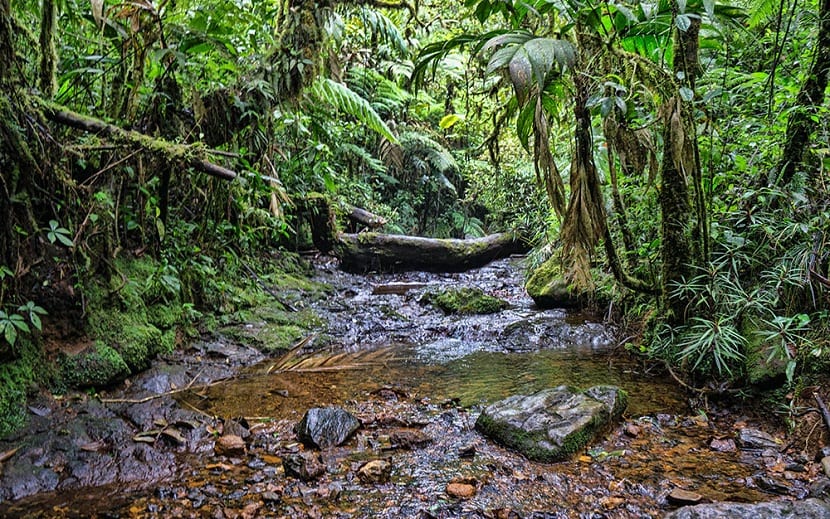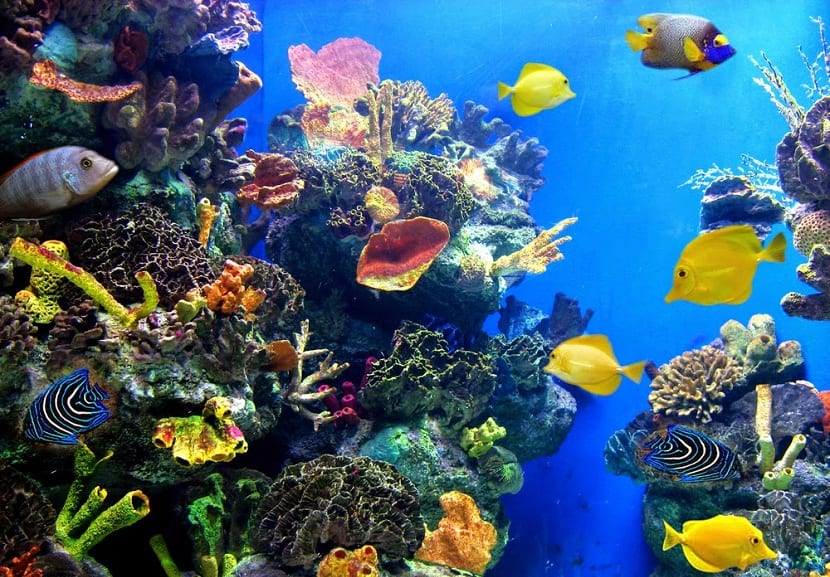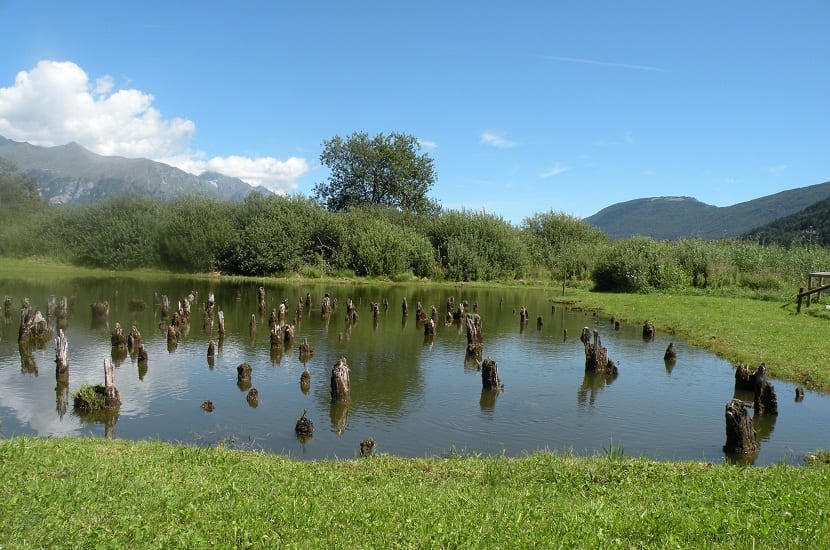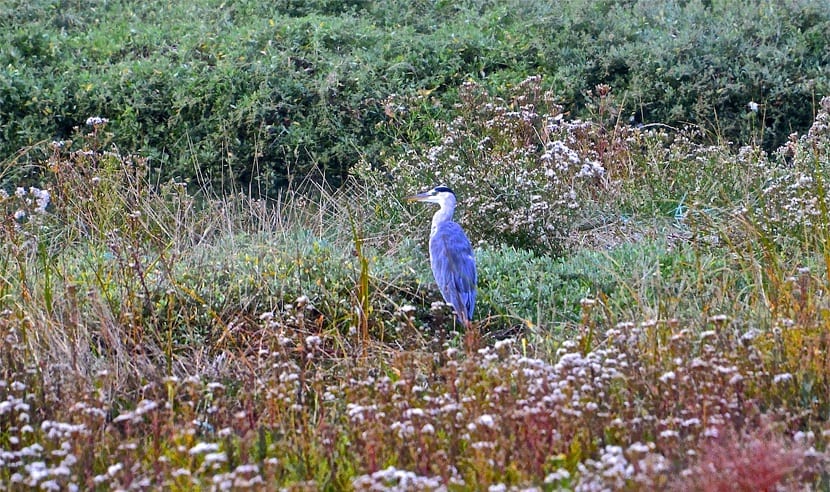
Biotope is a word that you have surely heard at some time. With the prefix bio it already denotes that it refers to life and with the suffix topo it refers to the place or territory. Therefore, it could be said that, etymologically, biotope means the life of a place.
However, nature is quite relevant in the term biotope. According to the Spanish dictionary, the biotope is «a territory or living space whose environmental conditions are adequate for a certain community of living beings to develop there«. Given this, what relationship does the biotope have with living beings, nature and ecosystems?
Relationship of the biotope with ecosystems

Many species of flora and fauna coexist in an ecosystem, forming a balance in which everyone can live. That place where they live has certain natural resources to be able to sustain the populations. Therefore, the species of flora and fauna that live together must share the territory and the resources. Although this "sharing" is not so simple. Basically species continually fight for resources. Some do it directly, that is, facing other species, others help each other, others adapt to the environment and are opportunistic, others know which resources have less competition, etc. Each species has its own survival mechanism, since it is the resources that sustain biodiversity.
Once the relationship of the biotope with the species that inhabit it has been explained, we can make the definition and difference that really exists. In this way of life two terms are distinguished: on the one hand we have the biocenosis, which refers to everything related to flora and fauna, and on the other hand, we have the biotope, referring to climate, water and soil type. Therefore, although the word biotope has the prefix bio, which means life, in this case, it refers to the place that makes animal and plant life possible and that sustains it with available natural resources.
We can say that when a biotope can support life, it generates an ecosystem. The existence of an ecosystem is only possible when the set of climate, water and soil type are adequate to support a population of animals and plants.
Biotope and biocenosis

As mentioned before, the association of the biotope and the biocenosis constitute the ecosystem. As we know, there are many types of natural ecosystems and habitats that provide the necessary, adequate and stable environmental conditions to allow populations of flora and fauna to proliferate and live.
Thanks to the interaction between all the elements that make up the ecosystem the formation of different types such as river ecosystems, mountain ecosystems, forest ecosystems, etc. is possible.
The interactions that exist in ecosystems can be decisive for the species that cohabit and are usually quite complex and fortuitous. Life in ecosystems has its own dynamics, that is, depending on the ecosystems in which we find ourselves, we can observe different elements that are related to each other at different levels of the food chain, with different balances or exchanges of energy and matter.
We must understand that flora and fauna species live and develop because there are adequate networks of interactions and energy exchange so that they can work like this. Unlike a habitat, which is a term related to the biotope, but which refers more to the species, the biotope is related to the biocenosis. In this way, the two terms together refer to the set of organisms of different species that coexist in space.
Why is the biotope important?

It is not that knowing what the biotope is is going to solve our lives or we are going to use it in our daily conversations, since the term biotope is used only in areas of ecology and environment. However, knowing what a biotope is is important to improve our general culture and in order to understand the importance of caring for our natural environment.
As mentioned before, in nature and in ecosystems, there is an ecological balance that is necessary to keep biodiversity stable. This balance is established mainly between the biotope and the biocenosis. There are also balances between the biocenosis with the biocenosis itself, that is, balances between animal and / or plant species. The vulnerability to the breakdown of this ecological balance depends on each species, its adaptability, genetic variability, distribution area, abundance and other environmental variables that are conditioning factors. Therefore, vulnerability to the breakdown of the ecological balance can occur at different levels. From the decrease in the populations of a certain species due to the lack of a natural component (such as the amount of organic matter in the soil), to the total disappearance of other species (such as a drought that exhausts everything Water).
We can study ecosystems by looking at different factors and relationships of all of them. For example, we can focus on studying an aquatic ecosystem focusing only on the fresh water part, or only on the hydrological cycle, or on a certain species of a river. On the other hand, we can analyze a complete ecosystem, such as the mountain one, and observe all the species that cohabit together and what relationships exist between all of them. Although the sum of different biotopes and biological communities form unique realities, the need for preservation is a common denominator of all of them.
How are biotopes restored?

We must bear in mind that it is the biotope that sustains all biodiversity and if, for example, one of the components of the biotope (for example the soil) does not maintain its essential characteristics or is degraded, it will affect all the biodiversity that needs it to survive. That is why, when the components of the biotope are damaged (generally by human activities) and it is not capable of restoring itself, or at least with the speed necessary so that it does not affect the rest of the species, it is necessary to carry out a restoration.
Since 1970, biotopes have received great attention in Europe (especially Germany) in reference to the preservation, regeneration and creation of natural environments. When an ecosystem is badly damaged, you try to preserve and restore.
In order to restore a biotope, actions of this type can be carried out:
- Creating green roofs
- Reconstruction of rivers to restore their quality
- Conservation of shrubs and trees in agricultural cultivated land
- Creation of natural parks
- Creation of school gardens or ponds that take into account the environment
- Design of private gardens that take into account the ecology.
- Tree reforestation
- Construction of green bridges
- Construction of ecological corridors
- Reintroduction of species
All this with a legislative regime that makes compliance with the established standards of protection and conservation binding.
The conservation of the biotope is essential to be able to sustain all the biodiversity that needs it. With this we can understand a little more about nature and its characteristics.
